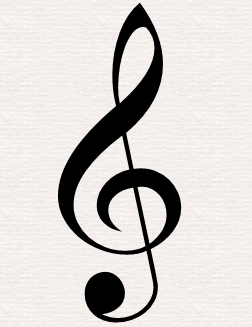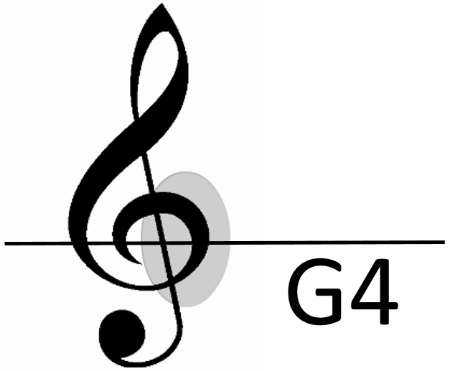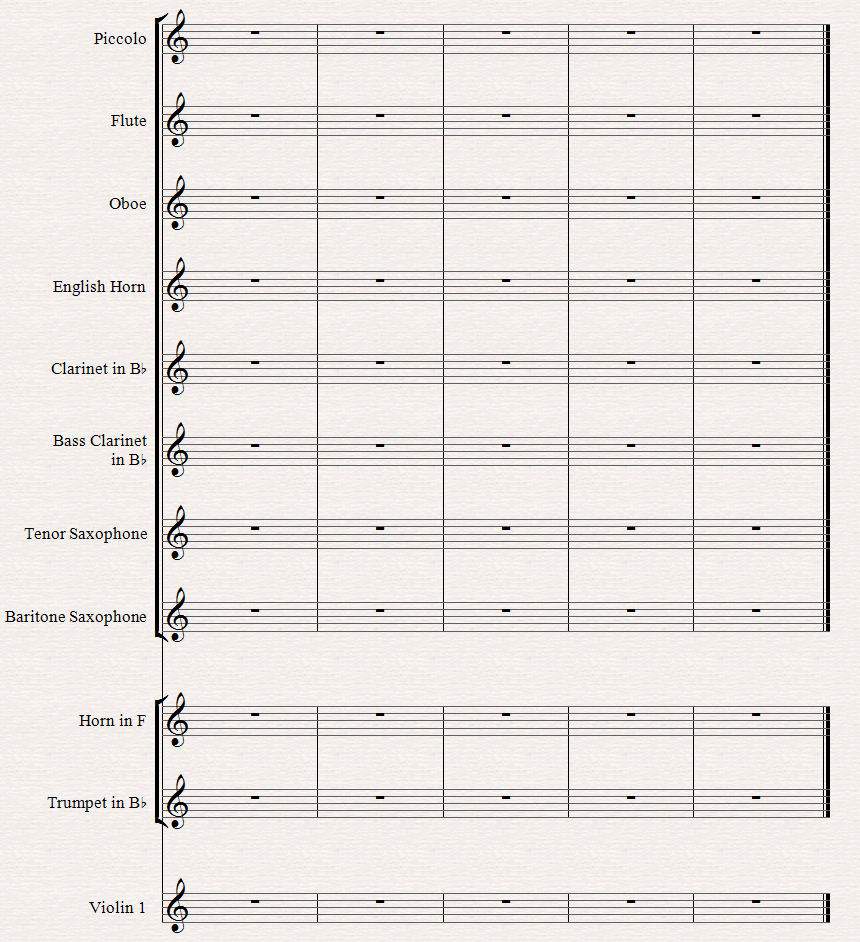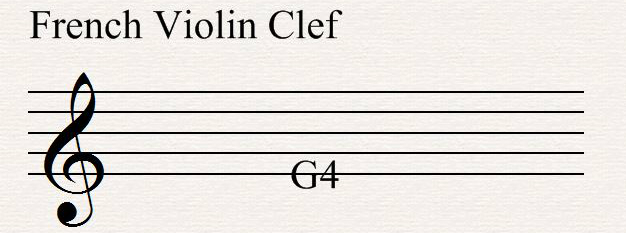Introduction to the G Clef
The first clef we’re going to learn about is called the G clef. Now that we know the basics of the musical staff and music notation, it’s about time we get down to business.
The G clef is the most commonly used clef, so that makes a good place to start our venture into the world of music notation.
Treble Clef
It’s possible to place the G clef on any one of the five lines of the staff. Wherever it’s placed, the line that passes through the curl would be the note G4. However, in actual practice there’s only one position of the G clef that’s used nowadays: the treble clef.
The treble clef is positioned so that the curl of the clef surrounds the 2nd-lowest line on the staff:

So the 2nd-lowest line is the note G4:

Nowadays it’s common to interchange the term G clef with treble clef, since the treble clef is the only G clef used anymore. But as we can see, the treble clef is actually a specific position of the G clef.
Reference Points
With practice, you can learn to memorize every line and space on the staff. Meanwhile, it’s very helpful to learn some reference points for each clef. (This way, we can find any note in relation to the reference.)
For example, we’ve already learned one reference point – G4. When we look at a staff with a treble clef, we can instantly find G4 by looking for the line that’s encircled by the curl of the clef.
There’s another reference point that may be even more helpful, and that’s C4, or middle C. In treble clef, C4 is located on the first ledger line below the staff:
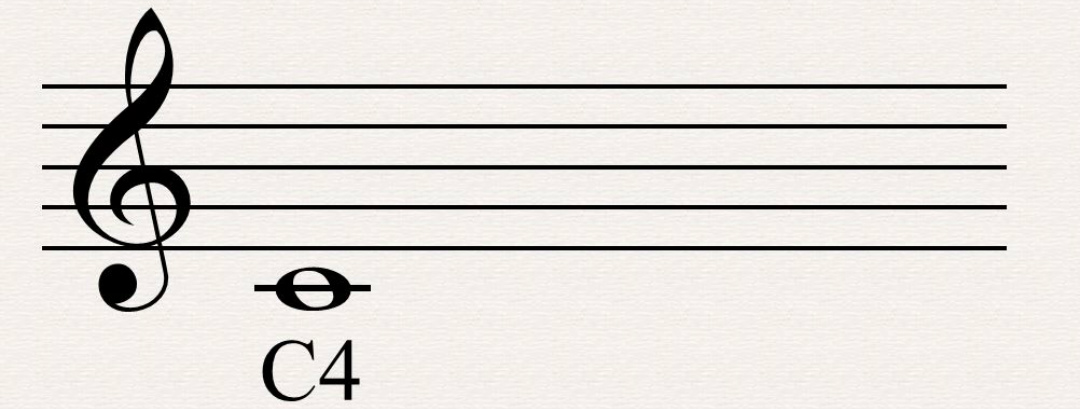
Middle C is a good reference point to use for all clefs that we learn. It’s our main reference point on the piano keyboard, so it makes sense to use it as the main reference point for reading music, too.
This way, we’re always “grounded”. We have a starting point to understanding where we are in reference to the piano keyboard, and in reference to other clefs. We can think of it like a “You are here” indication on a map or directory.
Treble Clef In Use
The treble clef is by far the most commonly used clef. First of all, a huge number of instruments use the treble clef as their main or only clef. Some examples are: violin, flute, guitar, trumpet, oboe, clarinets, saxophones, French horn, English horn, mandolin, and more:
It’s also used a lot in vocal music. Women’s voices like soprano, mezzo-soprano, and contralto use this clef, as does music written for younger boys (and girls).
Piano, harp, and other keyboard and pitched percussion instruments use two clefs together, with the upper one a treble clef (this is known as the “grand staff”, and we’ll cover it in more detail later):
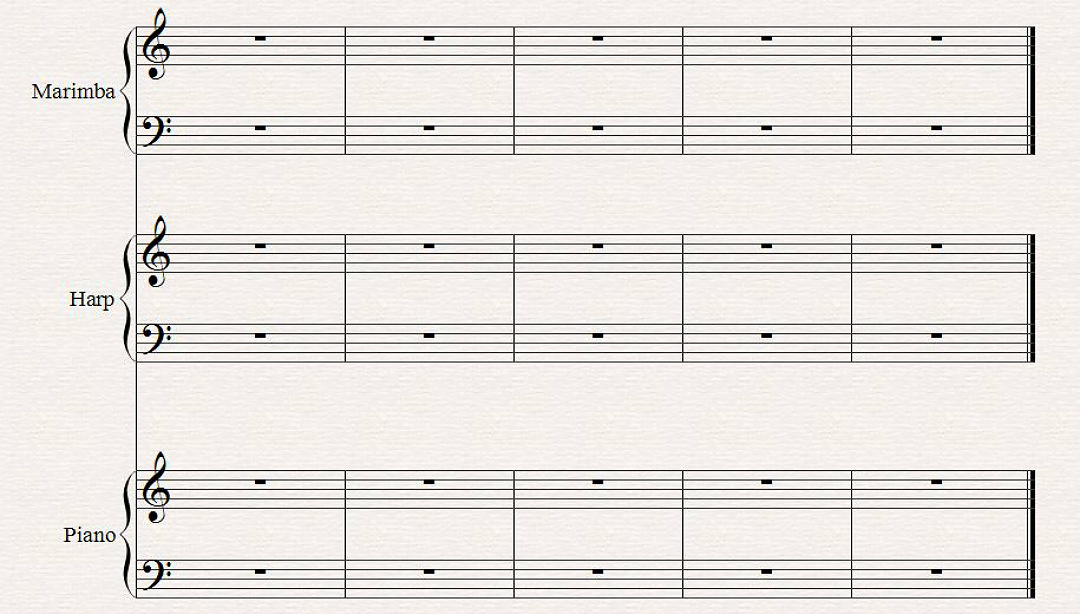
Instruments that have another clef as their main clef often use the treble clef as an alternate option, in case the music gets too high for their normal clef. Examples include viola, cello, bassoon, and more. These instruments usually use either alto or bass clef, but have the possibility to switch to treble clef in order to avoid tons of ledger lines:

In fact, the treble clef is so widely used that it has basically become the “default clef” in music. In other words, when someone is just jotting down some music, or doing harmony or theory exercises, they will usually use the treble clef.
Similarly, treble clef is standard for lead sheets, a type of sheet music that contains the basic musical information of a song, including its melody and chord symbols. Fake books, “real” books, and other similar publications often have hundreds of lead sheets packed into one volume. These are most often written in the standard treble clef (unless the book is catering to a specific instrument that uses a different clef.)
The French Violin Clef
There’s actually one other position of the G clef, but it’s rare. It’s called the French violin clef, or French clef.
The design of a French violin clef is a G clef whose curl encircles the lowest line of the staff, instead of the 2nd-lowest (as in treble clef):
Even though the French violin clef isn’t really used anymore, at least now we’ll be able to recognize it if we happen to come across one.
Practice Quiz
G Clef Quiz
Test your knowledge of this lesson with the following quiz:
Image Attribution:
L1000876_v1 by Sigfrid Lundberg ©2012 CC BY 2.0
practice makes perfect. by Jukie Bot ©2013 CC BY 2.0
